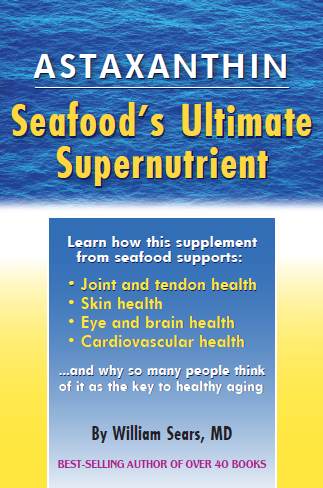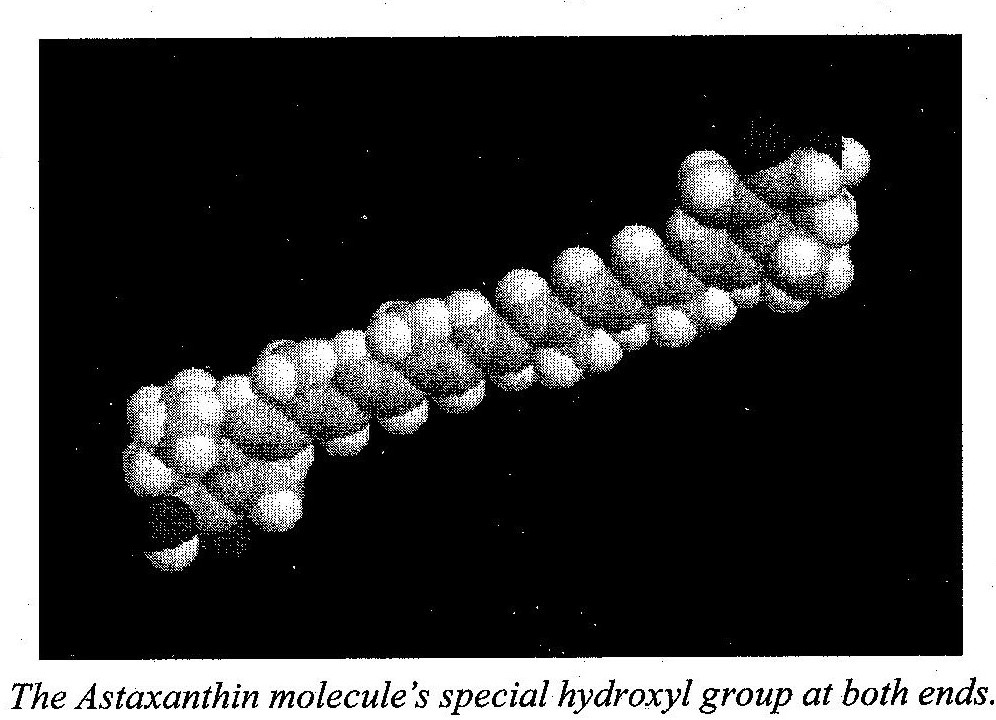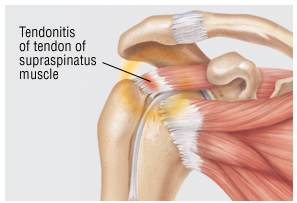Seafood’s Ultimate Supernutrient
by William Sears, M.D.
 As TV’s Dr. Oz says, Astaxanthin (pronounced asta-ZAN-thin) is “… the number one supplement that you’ve never heard of that you should be taking.”
As TV’s Dr. Oz says, Astaxanthin (pronounced asta-ZAN-thin) is “… the number one supplement that you’ve never heard of that you should be taking.”
It’s the most powerful antioxidant on the market, according to the standard tests for free-radical scavenging ability. [Why? Because of its unique molecular structure, which contains a strong anti-oxidizing hydroxyl group on both ends—thus enabling it, as fat-soluble and water-soluble, to penetrate into nearly all the body’s tissues.] The chart below gives the central strong comparison of Astaxanthin vs. other leading antioxidants.
Dr. Sears is an extremely well-known celebrity doctor who has appeared on several national TV shows. He’s also a ‘show-me-the-science’ professional who advocates processes that enable the natural healing capacity of the human body, whenever possible. Astaxanthin fits in to this sane and sober approach to enhancing human health… by mitigating the damage caused by oxidation of human cells that occurs on a massive scale thru normal aging as well as the large number of toxins we are exposed to in the modern world. [Many by sinister intention.]
 In this location I’m showing a scan of free-radical oxidation scavenging capacity, along with an image of Astaxanthin’s molecular structure. “What makes the Astaxanthin molecule so special? The best antioxidants are those that get into the most tissues. … some antioxidants get into fat tissue, and others get into blood and muscle. Here’s where Astaxanthin shines. It gets into nearly ALL the body’s tissues. Astaxanthin enjoys a chemical perk that sets it above the other carotenoids: it has an extra biochemical formula called a hydroxyl group attached to the ends of the molecule. This smart change of nature enables Astaxanthin to work its healthy way into tissues better than the other antioxidants.”
In this location I’m showing a scan of free-radical oxidation scavenging capacity, along with an image of Astaxanthin’s molecular structure. “What makes the Astaxanthin molecule so special? The best antioxidants are those that get into the most tissues. … some antioxidants get into fat tissue, and others get into blood and muscle. Here’s where Astaxanthin shines. It gets into nearly ALL the body’s tissues. Astaxanthin enjoys a chemical perk that sets it above the other carotenoids: it has an extra biochemical formula called a hydroxyl group attached to the ends of the molecule. This smart change of nature enables Astaxanthin to work its healthy way into tissues better than the other antioxidants.”
 Multipurpose Nutriceutical
Multipurpose Nutriceutical
Sears’ booklet can be purchased for a song, and it’s probably the best buy you’ll encounter for the foreseeable future. It was written in 2013, when studies of Astaxanthin were still in their early stages… and, interestingly, the natural product—the sea alga that produces Astaxanthin is haemotococcus pluvialis, a deep red, virtually indestructible one-celled plant seemingly designed to optimize the health of the sea life that have depended on it for eons —has yet to achieve widespread demand. Prices, at the time of this writing, remain low. For some reason, humanity seems to be holding back from adopting Astaxanthin as the bona fide miracle substance it clearly is.
From scientific journals, Astaxanthin shows promise in all of the following:
- Protects the brain against dementia
- Protects the eyes
- Modulates (strengthens) the immune system
- Protects skin from ultraviolet sun damage
- Protects cells against DNA damage, the precursor to cancer
- Improves endothelial (blood-vessel wall) function
- Reduces insulin resistance
- Lessens atherosclerosis
- Reduces inflammation
- Improves blood lipids; increases HDL, lowers triglycerides
- Reduces tissue wear and tear during intense exercise
The author then provides a box “Who Needs Astaxanthin?’ If any of the following concern you, Astaxanthin promises to help:
- Excess weight
- ‘-itis’ illnesses (inflammation): arthritis, bronchitis, colitis, dermatitis, tendonitis
- Cognitive difficulties
- Cardiovascular disease
- Vision problems
- Fatigue
- Athletic muscle fatigue
Dr. Sears proceeds with a simple-to-understand primer mainly on the nature of oxidation, but also on inflammation, immune system balance, the importance of the cell membrane and key components of the cell such as the mitochondria, and so on… for all of which Astaxanthin shows astonishing healing and enhancing properties.
Testimonials
Dr. Sears reports that he had a life-threatening illness in the late 1990s at the age of 57. With a successful practice, budding publishing career, and children and grandchildren, he decided to ask the question, “What do people who live the longest and healthiest do?” Answer: they eat a lot of fish. Which led him down the path of discovery of the superfood, Astaxanthin. Now he’s 75 and enjoying the health markers of a young man.
I’ve found these on the Web, basically from customers of the Bioastin brand of natural Hawaiian Astaxanthin that I’m taking now—obviously take any testimonial with a grain of  salt. It’s only been 7-8 days that I’ve been taking Astaxanthin for myself, so I can’t speak with any real record… but I do note additional energy and fluidity of movement. I started with 36 mg per day (12 mg @3 times) and am now at 24 mg (12 mg @2 times) with the primary objective being to lessen the inflammation of what I believe is tendonitis in my shoulders. Also to provide some healing assist to the tendon damage.
salt. It’s only been 7-8 days that I’ve been taking Astaxanthin for myself, so I can’t speak with any real record… but I do note additional energy and fluidity of movement. I started with 36 mg per day (12 mg @3 times) and am now at 24 mg (12 mg @2 times) with the primary objective being to lessen the inflammation of what I believe is tendonitis in my shoulders. Also to provide some healing assist to the tendon damage.
Sears points out how the over-the-counter drugs used to combat the inflammation may deal with the immediate pain, they do have side effects. Astaxanthin serves as a longer term anti-inflammatory: “… blocking fewer of the COX-2 enzymes. It also suppresses the overproduction of a broader range of pro-inflammatory biochemicals, namely prostaglandins, interleukins, and tumor necrosis factor alpha (TNF-a).” Hence, it’s a slower yet broader and safer way to help your body heal itself.
Bottom Line
For maintenance, a relatively small amount of Astaxanthin (4 mg to 12 mg daily) is required to provide optimum benefits. I’ve found the natural Hawaiian product via Amazon here at $18 for 50 12 mg capsules. IOW, you can improve your actual, real health dramatically in virtually every area that matters for ~$10 a month. Thus it doesn’t astound me that orthodox modern medical practice prefers to pass over such a ‘miracle product’ in silence. Not only will their patients cease buying the hazardous chemicals modern AMA doctors are paid to be pushing, naturally healthy people have little need to visit doctors.
Note: As Dr. Sears makes clear, continue to eat well and take care of your health with other natural antioxidant and life-enhancing foods, beverages, and practices. I’ve found that you can meet many nutritional needs with smoothies from the Nutri Bullet (or other extractors) device. Today is truly the Golden Age in availability of astonishingly beneficial knowledge (and the corresponding tools) of what’s good for our biology; the key of course is actually DOING it … and then withstanding the ever-increasing negative assaults of the corporate-state on human health. I have every confidence the state will be yielding imminently; Astaxanthin may be the straw that breaks the state’s back in that department.
This post has been read 5494 times!


Brian, I did read previously but did not leave a comment. The PurZanathin I’m taking is made from the same plant source as the Astaxanthin you are taking, Haematococcus pluvialis, but importantly my strength is only 4mg compared to your 12mg and so like you I’ll purchase from Amazon in future.
Keep trucking Dude, we will undoubtedly outlive the Bush’s and Clinton’s.
Peter.